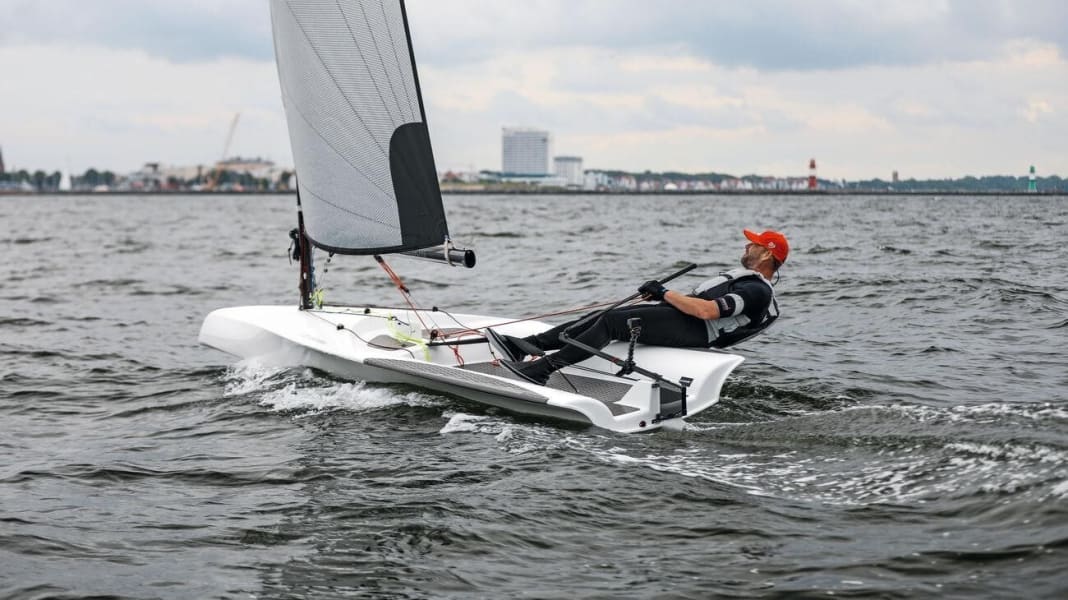YACHT test: Lowrider L12: new single-handed dinghy - competition for the Laser?
Lars Bolle
· 08.01.2021


Two years ago, the Potsdam-based sailing high-tech company Advanced Sailing Technologies (AST) launched a revolutionary dinghy. The Foiling Dinghy can fly by means of two self-regulating hydrofoils (see below for test download and video). Managing Director Thilo Keller describes his concept as "foiling for everyone". The dinghy has just been named Dinghy of the Year 2020 by the British magazines "Sailing Today" and "Yachts & Yachting".
But although hydrofoil sailing is experiencing a real boom, such as in the Vendée Globe and, from 17 December 2020, in the America's Cup, many sailors are clearly still not entirely comfortable with this type of sailing.
"We've had an increasing number of enquiries from customers who like the boat, but who tend to sail conventionally or want to improve their sailing skills before they try flying," says Keller.
The foiling dinghy was then quickly stripped of its wings, given a centreboard box with a centreboard and the name Lowrider L12.
However, the translation "low-flyer" does not refer to any type of foiling, but to the achievable speed and a special wave behaviour.
The hull shapes of the foiling dinghy and lowrider are identical, as is the GRP sandwich construction with carbon reinforcements. A particularly striking feature is the shape of the bow section, which is even more pronounced on the lowrider than on the foiling dinghy. The front third of the dinghy is designed as a so-called wave piercer; it sails through waves rather than over them. The name lowrider also refers to this sailing behaviour.
